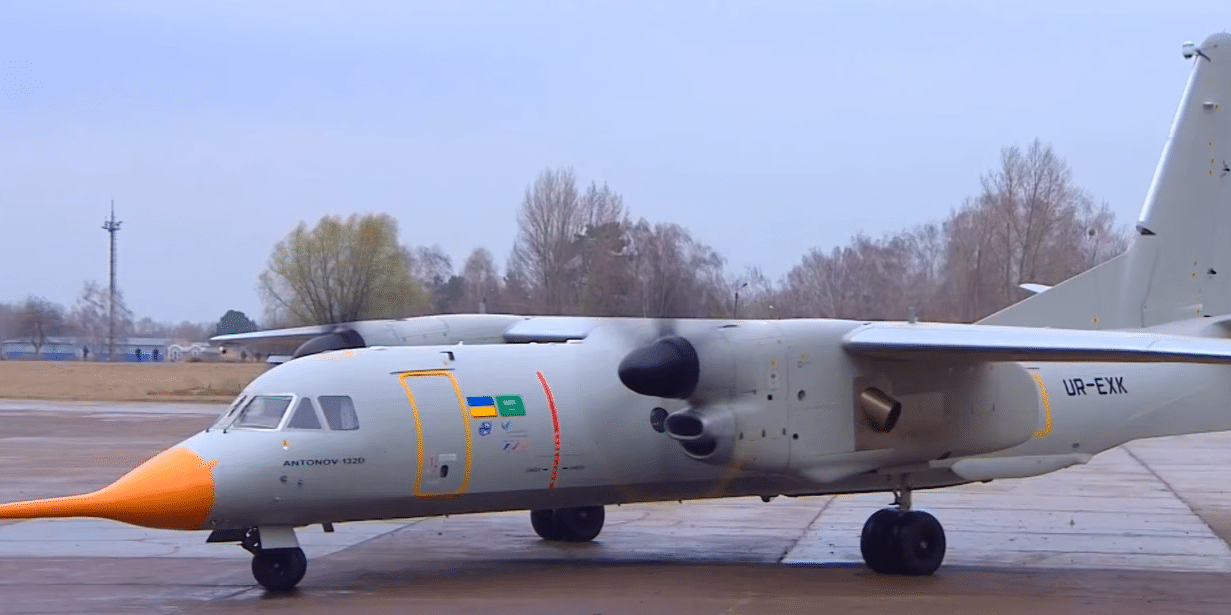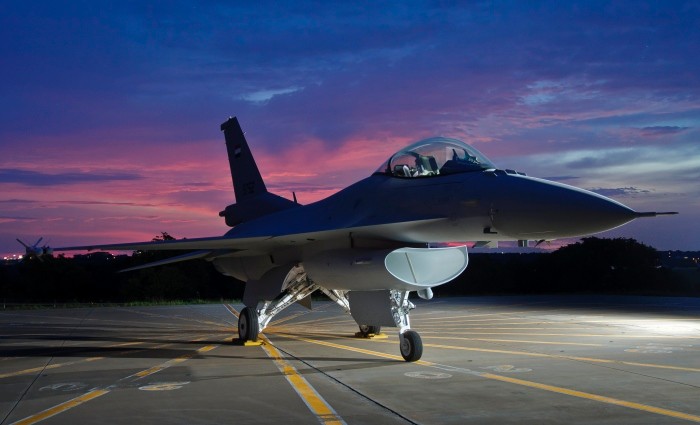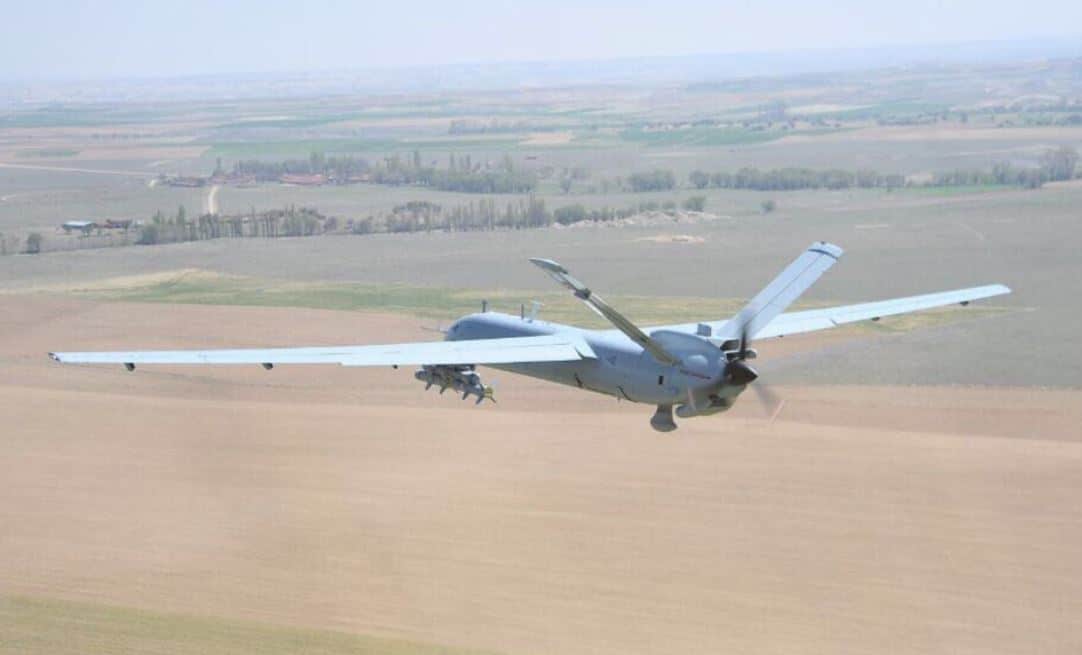2654Views 0Comments

Ukrainian-Saudi An-132D draws interest at 2017 Paris Air Show
On its international debut at the 2017 Paris Air Show, the Ukrainian-Saudi Antonov An-132 lightweight multi-mission aircraft is reportedly drawing interest.
A joint-venture between Antonov and Saudi Arabia’s King Abdulaziz City of Science and Industry (KACST) and Taqnia Aeronautics Company, the An-132 is a distant variant of the An-32 transport aircraft, itself a variant of the ubiquitous An-26 and An-24.
According Taqnia CEO Maj. Gen. (retired) Ali al-Ghamdi, the An-132 team had been “approached by … many countries who wold like to purchase the [An-132] cargo and special mission aircraft.”
Antonov originally proposed the An-132 as both a successor to the An-32 and a Ukrainian aircraft free of Russian components and systems. In 2015, KACST and Taqnia signed an agreement with Antonov to co-produce the aircraft and collaborate on its development.
Besides being larger than the An-32, the An-132 utilizes many commercially off-the-shelf (COTS) systems from the West. These include the Pratt & Whitney Canada (P&WC) PW150 turboprop engine, Honeywell Primus Epic 2.0 avionics, Dowty R408 propellers, Liebherr oxygen systems and Zodiac air conditioning.
The An-132 has a payload of 9,500 kg, which is comparable to that of the Airbus C-295 (9,250 kg) and likely the Leonardo C-27J Spartan. The An-132 reportedly (Defense News) $30 million U.S. per aircraft to acquire and $2,000-3,000 per hour to fly. KACST’s Dr. Khalid al-Hussain said (via Flight Global) that one of the key design decisions made for the An-132 was to manage fuel consumption.
Antonov finished assembling the first An-132 prototype in November, with the aircraft seeing its maiden test flight at the end of March. The second prototype will be flown in 18 months.
Under the workshare agreement (Flight Global), Saudi manufactured parts will constitute 18% of the airframe, with Ukraine leading in final assembly. However, by 2021 some An-132s will be assembled in Saudi Arabia, which will acquire up to 80 An-132s.
At IDEF 2017 in Istanbul in May, Antonov and Taqnia agreed to collaborate with Turkish’s Havelsan with develop a maritime patrol variant of the An-132.
Notes & Comments:
Along with the An-178, the An-132-series represents Antonov’s efforts to return as a prominent supplier of transport aircraft. Having once been a major player in the aviation market, especially in the developing world, Antonov had difficulties bringing new-generation aircraft, most notably the An-70, to fruition. Be it political instability or financial and technical challenges, Antonov had not been a major market factor in the 1990s and (bar the modestly successful An-148 airliner) 2000s.
Organizational changes (e.g. Antonov being absorbed into Ukroboronprom) aside, in 2015, Antonov began showing new examples of its development efforts in 2015. The most notable of these efforts was the An-178 medium-lift transport aircraft, which Antonov hopes to market as an affordable competitor to the C-130J Super Hercules and Embraer KC-390. The An-178 is a development of the An-148 airliner, which itself may also evolve into a special mission aircraft.
In general, Antonov could showcase new ideas and development work, but it evidently required overseas partners to help bring its programs to fruition. Saudi Arabia, which has been seeking to diversify its carbon-reliant economy under Riyadh’s Vision 2030 plan, is such a partner. Riyadh’s fiscal capacity has enabled Antonov to complete the An-132, which in turn has provided Saudi Arabia a high-value product for export.
For Saudi Arabia, economic success with the An-132 will depend on the aircraft’s success in the aviation market. This is a competitive space with established players, most notably Airbus and its C-295, which has seen widespread user adoption among military users. The apparent emphasis on competitive acquisition as well as maintenance and operational costs is a promising first step, which should provide Antonov entry into its traditional developing world and potentially Eastern and Central European markets.


